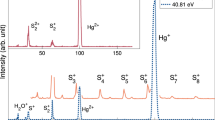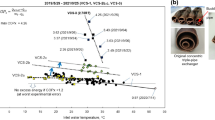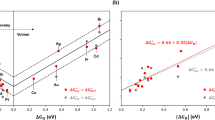Abstract
So far as I am aware, no attempt has been made to study chemical reactions and in particular discharge reactions by means of the mass-spectrograph. Thus Lunt1, in reviewing the numerous theories of discharge reactions including ion clusters, excited or metastable molecules, kinetic ions, etc., considers that there are no direct grounds for assuming the existence of compound ion formation except in the case of H3+.
This is a preview of subscription content, access via your institution
Access options
Subscribe to this journal
Receive 51 print issues and online access
$199.00 per year
only $3.90 per issue
Buy this article
- Purchase on Springer Link
- Instant access to full article PDF
Prices may be subject to local taxes which are calculated during checkout
Similar content being viewed by others
References
Lunt, Trans. Far. Soc., 32, 1691 (1936).
Mochan and Gelbert, Acta Phys. chim., 7, 767 (1937).
Author information
Authors and Affiliations
Rights and permissions
About this article
Cite this article
ELTENTON, G. Direct Evidence for the N2H+ Ion in the Discharge Reaction between N2 and H2. Nature 141, 975–976 (1938). https://doi.org/10.1038/141975b0
Issue Date:
DOI: https://doi.org/10.1038/141975b0
Comments
By submitting a comment you agree to abide by our Terms and Community Guidelines. If you find something abusive or that does not comply with our terms or guidelines please flag it as inappropriate.



